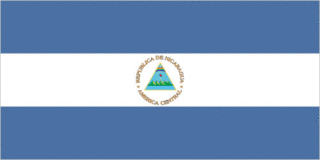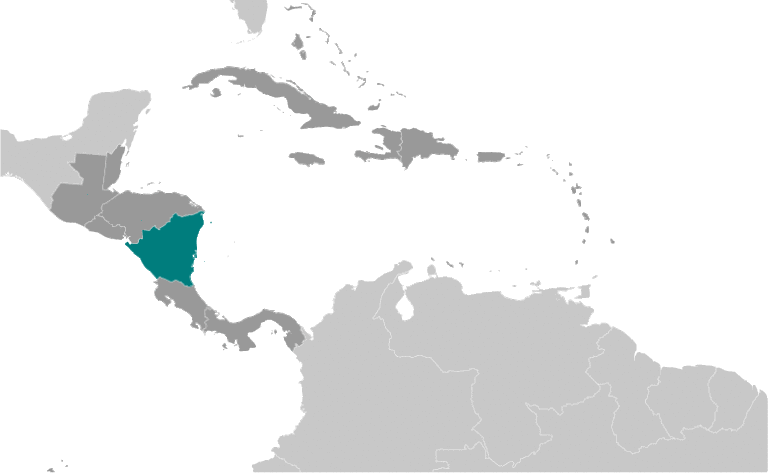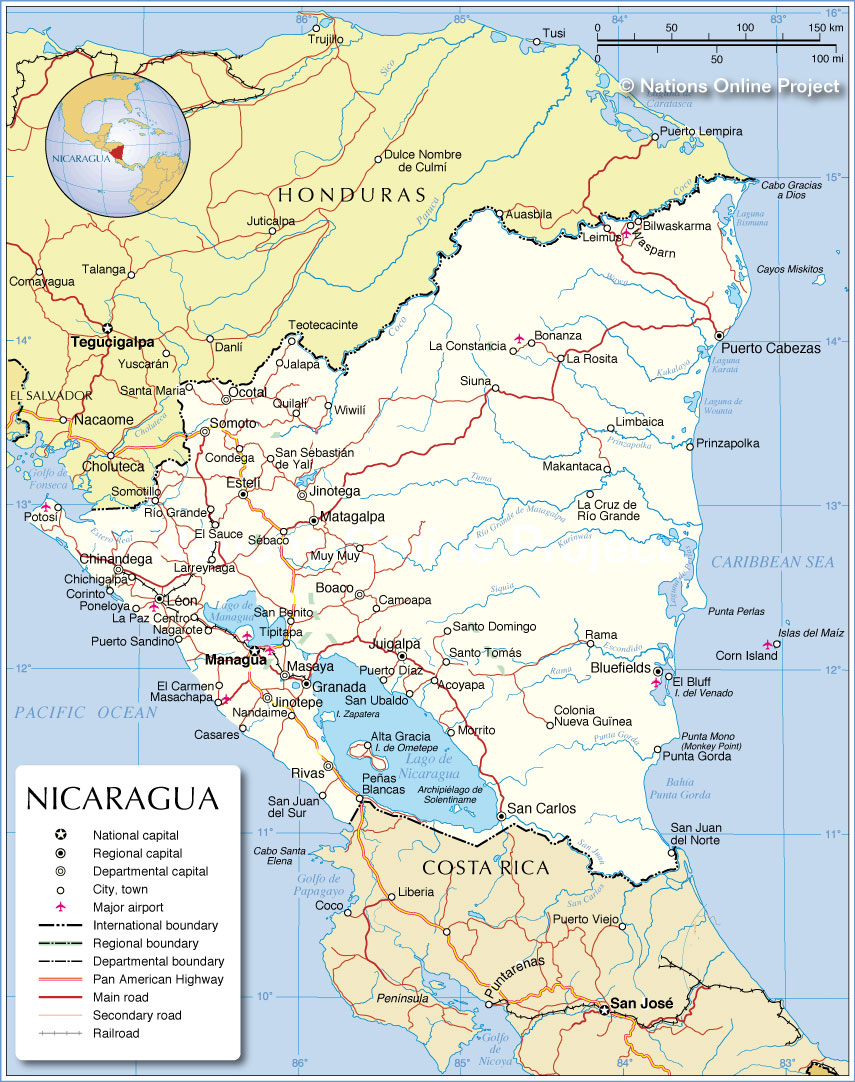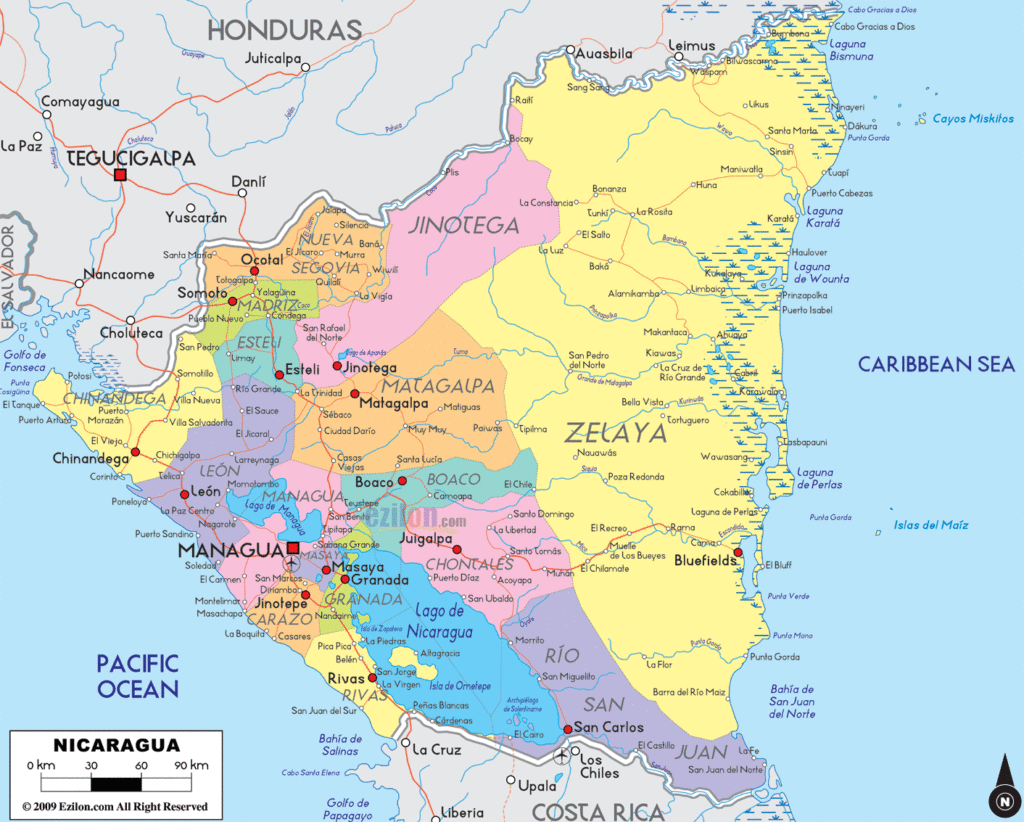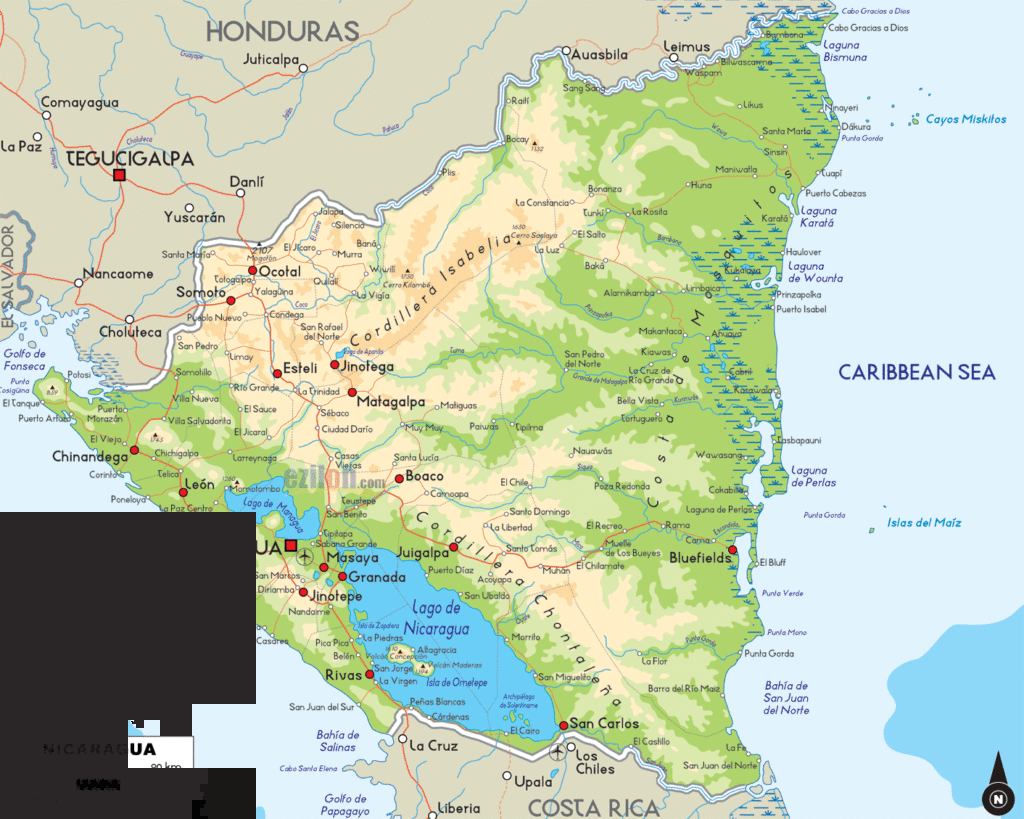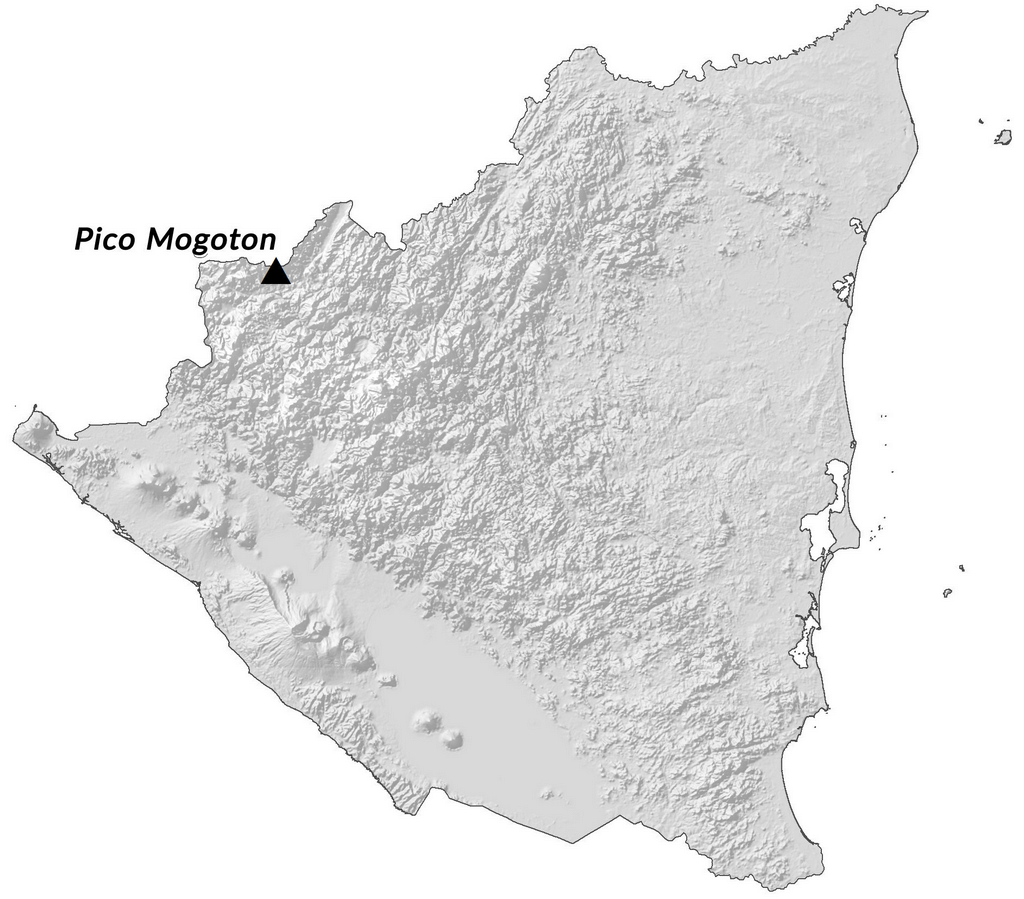Nicaragua is a Central American country covering a total area of 130,370 sq. km (50,340 sq. mi) making it the region’s biggest country.
The country can be divided into roughly three physiographic regions, the Pacific lowlands, central highlands, and the Caribbean highlands.
The Pacific lowlands extend about 75 km inland from the coast. As seen on the map above, a row of volcanoes rises from this otherwise mostly flat area.
Lake Managua and Lake Nicaragua, the largest freshwater lakes in Central America occupy a rift region located to the east of the Pacific lowlands. Fertile plains surround these lakes and extend northwestwards. This region is highly cultivated due to the presence of fertile volcanic ash.
To the east and northeast of the Pacific lowlands is the central highlands region which features rugged mountains like the Isabelia Mountains. The 2,085 m (6,841 ft) high Mogotón, the highest point in the country, is located here. Its position has been marked on the map by a yellow triangle.
The Mosquito Coast comprises the eastern Caribbean lowlands region of Nicaragua that has fertile soils that end in numerous lagoons, bays, and salt marshes along the coast. Several rivers drain this region into the Caribbean Sea.
From the Pacific coast to the Caribbean Sea, Nicaragua is a beautiful country with diverse geography. This map of Nicaragua provides a unique view of the country, showcasing its major cities, roads, and rivers. In addition, the map includes satellite imagery and an elevation map to show the country’s lakes, volcanoes, and mountainous terrain.
Whether you’re looking for a detailed view of the country’s terrain or just want to get a better understanding of Nicaragua’s geography, this map is sure to provide the insight you need. Explore the country’s lush rainforests, rugged mountains, and vast deserts with this comprehensive map of Nicaragua.
Online Interactive Political Map
Click on ![]() to view map in "full screen" mode.
to view map in "full screen" mode.
Nicaragua (officially, the Republic of Nicaragua) is divided into 15 departments (departamentos, sing. departamento) and 2 autonomous regions (regions autonomistas, sing. region autonoma). In alphabetical order, the departments are: Boaco, Carazo, Chinandega, Chontales, Esteli, Granada, Jinotega, Leon, Madriz, Managua, Masaya, Matagalpa, Nueva Segovia, Rio San Juan and Rivas. North Caribbean Coast Autonomous Region (Costa Caribe Norte) and South Caribbean Coast Autonomous Region (Costa Caribe Sur) are the two autonomous regions of Nicaragua. The departments are further subdivided into 153 municipios (municipalities).
Covering an area of 130,967 sq. km, Nicaragua is the largest country in Central America. Located on Lake Managua’s south western shores is, Managua – the capital, the largest and the most populated city of Nicaragua. It is also the administrative, commercial, educational and economic hub of the country.
Location Maps
Where is Nicaragua?
Nicaragua is known as the land of lakes and volcanoes, a Central American country located between the Pacific Ocean and the Caribbean Sea, and home to the two largest freshwater lakes in Central America, as well as 19 active volcanoes. It borders two countries, Honduras to the north and Costa Rica to the south, and its capital city is Managua, the third-largest city in Central America. Other major cities in Nicaragua include León, Tipitapa, and Masaya.
High Definition Political Map of Nicaragua
Physical Map of Nicaragua

